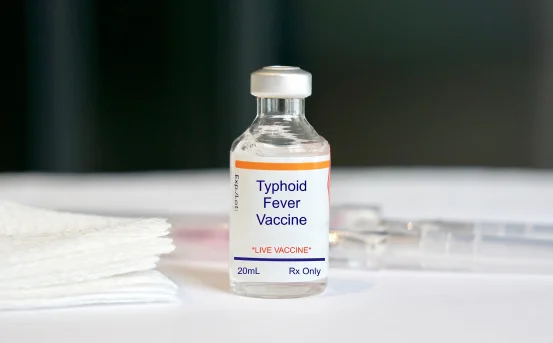Hepatitis C is a viral infection that affects the liver and can lead to serious liver damage if left untreated. For many years, it was considered a difficult disease to manage, with long treatment durations and harsh side effects. But medical science has evolved significantly in the last decade. Today, Hepatitis C is not only treatable but often curable with a short course of oral medication.
Fortunately, the landscape of Hepatitis C treatment has dramatically improved over the last decade. What was once a difficult-to-treat illness requiring months of injectable medication with unpleasant side effects has now become a curable viral infection with short, effective oral therapies. Thanks to the development of Direct-Acting Antivirals (DAAs), more than 95% of patients today can achieve a cure often within 8 to 12 weeks with minimal or no side effects.
What is Hepatitis C?
Hepatitis C is caused by the Hepatitis C Virus (HCV), which spreads primarily through blood-to-blood contact. The most common mode of transmission is through sharing needles, unscreened blood transfusions, and, less commonly, through unprotected sex or from mother to child during childbirth. Many people don’t realize they are infected because symptoms can take years to appear, and by then, significant liver damage may have occurred.
The virus can cause both acute and chronic infections. Acute Hepatitis C usually resolves on its own within six months, but about 75–85% of infected individuals develop chronic Hepatitis C, which can lead to liver cirrhosis, liver failure, or liver cancer if not treated.
The Goal of Hepatitis C Treatment
The primary goal of treating Hepatitis C is to eliminate the virus from the body, known as achieving a Sustained Virologic Response (SVR). SVR means the virus is undetectable in your blood 12 weeks or more after finishing treatment. Achieving SVR is considered a cure, and it greatly reduces the risk of complications like cirrhosis and liver cancer.
Modern treatment has an astonishing success rate, with cure rates exceeding 95% in most patients when the right medication is used under proper supervision.
Evolution of Hepatitis C Treatment
In the early 2000s, the standard treatment involved a combination of interferon injections and ribavirin, which had limited success rates (about 40–60%) and severe side effects, including fatigue, depression, and flu-like symptoms.
However, the discovery of Direct-Acting Antivirals (DAAs) revolutionized Hepatitis C treatment. DAAs target specific steps in the HCV lifecycle and are taken orally for a short period, typically 8 to 12 weeks. These medications are much more effective, have fewer side effects, and work across different HCV genotypes.
Treatment of Hepatitis C
Today, several DAA combinations are approved and widely used. Some of the most commonly prescribed include:
- Sofosbuvir/Velpatasvir (Epclusa)
Effective against all HCV genotypes (pan-genotypic), this is a once-daily pill usually taken for 12 weeks. It is especially effective in people with or without cirrhosis.
- Glecaprevir/Pibrentasvir (Mavyret)
Also pan-genotypic, Mavyret is taken for just 8 weeks in most patients without cirrhosis. It’s a preferred choice for people who have not been previously treated for Hepatitis C.
- Sofosbuvir/Ledipasvir (Harvoni)
Used primarily for genotype 1, Harvoni is also a once-daily oral regimen with high success rates and minimal side effects.
The choice of medication depends on several factors, including HCV genotype, viral load, previous treatment history, liver condition (presence of cirrhosis), and other underlying health conditions.
How Treatment is Administered?
Unlike older therapies, modern Hepatitis C treatments do not require hospitalization or injections. Treatment is typically done entirely at home with once-daily oral medication, which makes it convenient and accessible for most patients.
Before starting treatment, your doctor will perform a series of tests, including :-
-
HCV genotype testing
-
Liver function tests
-
Fibroscan or liver biopsy (to assess liver damage)
-
HIV and Hepatitis B co-infection screening
Monitoring continues during and after treatment to ensure the virus has been eradicated and the liver is recovering.
Possible Side Effects of Treatment
While DAAs are generally well-tolerated, some people may experience mild side effects such as :-
-
Fatigue
-
Headache
-
Nausea
-
Insomnia
These side effects are usually temporary and manageable. Most patients report feeling better just a few weeks into treatment as the virus levels drop rapidly.
Post-Treatment Recovery and Liver Health
Achieving a cure doesn’t mean your liver automatically returns to perfect health, especially if damage was already present. Patients with cirrhosis will need regular liver monitoring even after being cured. Lifestyle changes such as avoiding alcohol, maintaining a healthy weight, and managing diabetes (if applicable) are essential for long-term liver health.
Vaccination against Hepatitis A and B is also recommended since co-infection can increase liver complications.
Treatment Access and Affordability
One of the major hurdles in Hepatitis C care globally has been the cost of treatment. While DAAs were initially expensive, generic versions are now available in many countries, especially in India, making treatment more affordable and accessible. Many government health schemes and insurance policies now cover Hepatitis C medications.
Telemedicine and online doctor consultations have further made it easier for patients to begin treatment without visiting a hospital, especially in remote areas.
Who Should Get Treated?
According to the World Health Organization (WHO) and other global health bodies, all individuals diagnosed with chronic Hepatitis C should be considered for treatment, regardless of symptoms. Early treatment can prevent long-term liver damage and reduce the risk of transmitting the virus to others.
Special attention is given to high-risk groups such as :-
-
People who inject drugs
-
Individuals with HIV
-
Those on dialysis
-
Pregnant women (under medical guidance)
-
Healthcare workers exposed to infected blood
Conclusion
The treatment of Hepatitis C has undergone a dramatic transformation. With short-duration, highly effective oral therapies now widely available, a cure is within reach for nearly everyone living with Hepatitis C. Early detection and prompt treatment not only prevent serious liver damage but also reduce the overall burden of the disease in the community.























